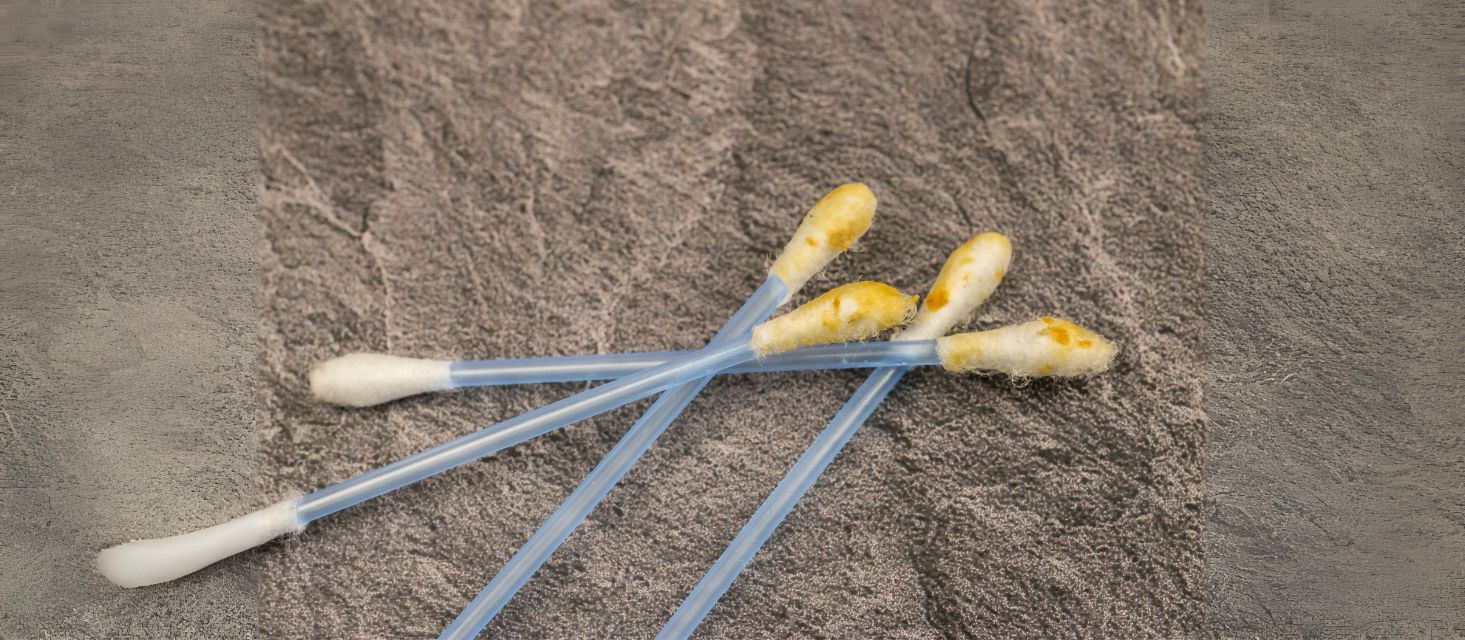Earwax, scientifically known as cerumen, plays an essential role in keeping your ears healthy. It acts as a self-cleaning mechanism for the ear canal, trapping dust, debris, and foreign bodies, while also preventing infection by maintaining moisture levels. However, did you know that the colour of your earwax can offer clues about your ear health? From yellow ear wax to dark brown ear wax, each hue carries meaning. Understanding these ear wax colors can help you know when it's time to seek medical advice.
In this article, we’ll explore the different types of earwax, what their colour meaning indicates, and when you should be concerned about earwax buildup or other potential issues in your ears.
What Is Earwax and Why Does It Change Colour?
Earwax is produced by ceruminous glands located in the outer ear. These glands secrete a combination of sebaceous oils, dead skin cells, and other substances that together form earwax. As earwax moves from the ear canal to the ear opening, it traps dust, debris, and foreign bodies, preventing them from reaching the eardrum.
As earwax ages, it changes colour and texture, with newer earwax typically being softer and lighter in colour. The colour of your earwax can reveal a lot about your ear health, including whether your ears are healthy, or if there’s earwax blockage or an underlying infection.
Common Earwax Colours and Their Meaning
1. Yellow Earwax: Healthy and Normal
Yellow earwax is the most common and completely normal type of earwax. This type of earwax is typically fresh and soft, often appearing lighter in colour when first produced. Yellow earwax is usually healthy wax, meaning your body is functioning as expected and producing the right amount of earwax.
If you notice yellow ear wax without any discomfort or other symptoms, it’s a sign that your ear canal is clean and functioning properly. However, if you experience other issues like muffled hearing or ear pain, it could indicate an underlying problem that requires attention.
2. Brown Earwax: Age and Accumulation
As earwax moves through the ear canal, it oxidises, which darkens its colour. Brown ear wax typically indicates older earwax that has been in the ear for a while. This type of earwax may be drier and flakier compared to its yellow counterpart, and it can often appear light brown or dark brown depending on how long it has been in the ear.
Brown earwax is normal and usually a sign that your earwax has naturally moved out of the ear canal. However, if you experience earwax buildup or discomfort from impacted ear wax, you may need to take action to remove the excess wax. Using a gentle ear cleaning device like the Eddy ear wax removal tool can help you clear the ear canal safely.
3. Dark Brown Earwax: Oxidation or Excess Wax
Dark brown earwax is often a result of oxidation, the process by which earwax darkens over time. Dark brown wax is typically older, having spent more time in the ear canal, and can sometimes be accompanied by a dry wax or sticky wax texture.
While dark earwax isn’t inherently problematic, it could indicate an issue if it’s associated with impacted ear wax or if it causes symptoms such as ear pain, difficulty hearing, or a feeling of fullness in the ear. In some cases, dark earwax may also indicate ear trauma or injury, particularly if it’s mixed with blood.
4. Wet Earwax: An Indicator of a Healthy Ear
Wet earwax, often seen as a slightly sticky wax, is more common in people with a higher production of cerumen. This type of earwax is generally associated with healthy ears and is most often produced by the ceruminous glands in the outer ear. Wet wax is often more moist and typically appears yellow to brown in colour, depending on its age.
However, excessive amounts of wet earwax can lead to earwax buildup and potentially cause blocked ears, muffled hearing, or discomfort. It’s important to maintain proper ear hygiene and clean your ears regularly to prevent an earwax blockage. For safe cleaning, try the Eddy ear wax removal device, which uses gentle water irrigation to help clear the ear canal.
5. Dry Earwax: A Genetic Trait
Dry earwax is more commonly found in individuals of East Asian descent, and it is typically associated with dry earwax. It is often flaky and light in colour, sometimes appearing white or light brown. Dry earwax is a result of lower activity in the sebaceous glands, leading to a less greasy and more powdery texture.
This type of earwax is still completely normal, but it may be prone to wax buildup if not cleaned properly. Individuals with dry earwax may experience more frequent earwax blockages, so it’s important to regularly check your ears for impacted ear wax. For cleaning, the Eddy ear wax removal tool is designed to remove earwax gently and effectively.
6. Green Earwax: A Sign of Infection
Green earwax often indicates an ear infection, particularly a middle ear infection or otitis externa (swimmer’s ear). The green colour comes from the presence of pus produced by the body in response to bacterial infection. Along with green earwax, you may also experience symptoms such as ear pain, itching, fever, or drainage from the ear.
If you notice green earwax or suspect an ear infection, it’s important to see a doctor. Left untreated, infections can lead to more serious complications, such as hearing loss or a ruptured eardrum. Prompt treatment with antibiotics or ear drops can help clear the infection and restore normal ear health.
7. Red or Bloody Earwax: Potential Injury or Infection
Red or bloody earwax can be concerning, as it may be a sign of an injury to the ear canal, such as from excessive cleaning with cotton swabs or ear trauma. If you notice blood mixed with your earwax, it could indicate a tear in the ear canal or the presence of an underlying ear infection.
If you see red ear wax or experience ear pain, it’s crucial to seek medical attention. A healthcare provider can assess the situation and recommend appropriate treatment to prevent further damage to your ear and hearing.
When Should You Seek Medical Advice About Earwax?
While earwax is a normal and healthy part of ear function, there are certain situations in which you should see a doctor for further evaluation:
-
Excess earwax buildup: If you experience a feeling of fullness in the ear, muffled hearing, or discomfort due to a buildup of earwax, it may be time to remove earwax. The Eddy ear wax removal device is an easy and safe tool for regular ear maintenance.
-
Pain or discomfort: If earwax is causing ear pain, itching, or discomfort in the ear, it may be a sign of an infection or blockage.
-
Blood in earwax: If you notice red or bloody earwax, especially if accompanied by pain or trauma, it’s important to seek medical advice immediately.
-
Green or smelly earwax: Smelly earwax or green earwax can indicate an ear infection and should be checked by a doctor.
-
Hearing changes: If you notice muffled hearing or any changes in your hearing, it could be a result of impacted earwax or other ear conditions.
Regular ear care is important for maintaining healthy ears. For more on earwax removal, check out our complete guide.
Conclusion
The colour of your earwax can reveal a lot about your ear health and help you determine when to seek medical attention. While yellow ear wax and brown ear wax are usually harmless, green, red, or smelly ear wax can be indicators of infection or injury. Regular ear maintenance, using tools like the Eddy ear wax removal device, can help keep your ears clear and healthy. If you experience any unusual symptoms or earwax blockage, don’t hesitate to seek medical advice.
Frequently Asked Questions
What color ear wax is concerning?
Green, red, or smelly ear wax is concerning, as it may indicate an infection or ear injury. If you experience these symptoms, it's important to see a doctor.
Why did a big chunk of ear wax come out of my ear?
A large chunk of earwax can come out naturally if there has been a buildup in the ear. This is generally normal but should be monitored to prevent earwax buildup from affecting hearing.
Why is my earwax wet and smelly?
Wet and smelly earwax could indicate an ear infection. If the smell is accompanied by pain or discharge, it’s important to consult a doctor.
Why is my earwax so dark?
Dark ear wax often indicates older earwax that has oxidised. It’s usually not a problem unless associated with discomfort or impacted ear wax.
Why am I producing so much earwax?
Excess earwax production can be caused by a variety of factors, including environmental exposure or genetic factors. If it causes discomfort or hearing issues, regular cleaning or a visit to the doctor may help.








Share:
Related Blogs
Mucus in Ear: What It Means, What Causes It, and What To Do
Understanding Fungal Ear Infections: Causes, Symptoms, and Treatment